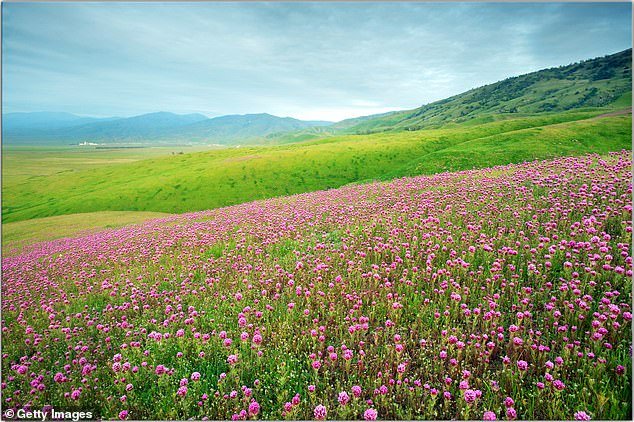An area of the West Coast is sinking, and it’s dragging home values down with it.
California‘s Central Valley, a large, flat agricultural region that sits inland in the belly of the state, has experienced rapidly lowering ground – as much as one inch per year, according to a new study by UC Riverside.
The area is considered America’s breadbasket, supplying more than 40 percent of the country’s table foods including almonds, cereal grains and wine grapes.
John Steinbeck’s The Grapes of Wrath paints the Central Valley as a legendary promised land. Dust Bowl migrants journeyed west along Route 66 and then turned north, hoping to find a new beginning on California’s fertile fields during the Great Depression.
But now sinking land has caused property values in the region to fall as much as 5.8 percent from 2015 to 2021, according to the study.
As a result, the total in home value losses ranged between $6,689 and $16,165 per home over the six year period, and totaled $1.87 billion across the region.
‘Basically, the land is sinking and so are the property values,’ said Mehdi Nemati, UCR assistant professor of environmental economics and policy, who led the study.
‘This is the first time anyone has quantified how much land subsidence costs homeowners in this region.’

California’s Central Valley is America’s breadbasket and served as the backdrop for John Steinbeck’s classic novel The Grapes of Wrath

Central Valley specializes in food production, including almonds, cereals and wine grapes

Pictured: Mehdi Nemati, a UCR assistant professor of environmental economics and policy
Nemati said excessive farmland water pumping is causing the problem.
‘Think of a sponge. If you squeeze water out and never let it soak again, it flattens and hardens. That’s what’s happening underground,’ he said.
When surface water supplies shrink due to drought, farmers turn to groundwater reserves and excessive pumping, which speeds up subsidence.
When the groundwater is pumped out faster than it is replenished, it causes underground clay and silt layers to compress and lower.
The area, bordered by the Sierra Nevada mountains to the east and the Coast Ranges to the west, boasts a unique class 1 soil rich for farming. The Valley stretches about 450 miles and produces 25 percent of America’s food.
The area has 250 different crops in all, and it is the world’s biggest supplier of almonds. It also produces grapes, pistachios, oranges, artichokes, dates, dried plums, figs, garlic, kiwifruit, olives, olive oil and tomatoes as well as significant amounts of cereal grains and hay.
The Central Valley has been dealing with the subsidence problem since the 1920s, long before Steinbeck’s 1939 novel. In some places, the land has sunk as much as 30 feet.
Despite its productive farming industry, the area has been nicknamed ‘greatsinks’ due to the excessive groundwater pumping.

The Central Valley is a large, flat agricultural region that sits inland

A massive sprinkler system sprays Central Valley crops, but the water is pumping out too fast

The area produces grapes, pistachios, oranges, artichokes, dates, dried plums, figs and garlic

Homes in Central Valley are sinking and values are going down due to the local water problem

The area is known as America’s breadbasket, supplying over 40 percent of the country’s table food

When surface water supplies shrink due to drought, farmers turn to groundwater reserves

Almond harvesting in Central Valley, where the groundwater is being pumped out too fast
The pumping process also damages infrastructure like roads, buildings and pipelines.
It also halts water flow to springs and streams and damages the wildlife that relies on fresh water.
The researchers used satellite-based radar data to measure ground-level changes, then matched that with nearly 200,000 home sales across eight counties in the Central Valley.
Nemati pinpointed one cause for the drop in home values, and said buyers tend to stay away from properties in areas known for land instability.
Add to that higher insurance rates and higher maintenance costs from cracked foundations, and homes are even less likely to appreciate in value.
Nemati calls the home value drop a ‘wake-up call’.
Since 2014, California has been complying with the Sustainable Groundwater Management Act, which requires local agencies to balance groundwater withdrawals and replenishment across the state.
But due to climate change, the groundwater management problems are only getting worse.
‘Ignoring groundwater overuse doesn’t just affect farmers and water agencies,’ Nemati said. ‘It also hits homeowners – especially those living on sinking ground.’

